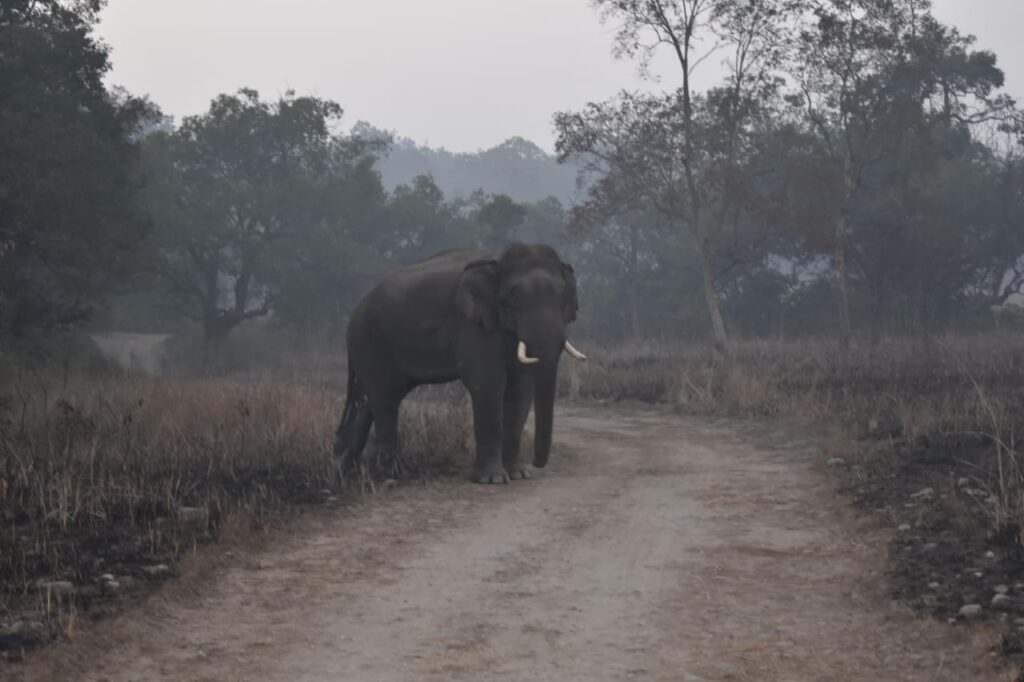
5 Secret Safari Trails for Capturing Tuskers in the Wild at Jim Corbett
Hidden deep in the dense sal forests and grasslands of Jim Corbett National Park, majestic tusker elephants roam like ancient guardians of the jungle. While tigers may steal the spotlight, the thrill of encountering a wild elephant—especially a tusker—is unmatched for any serious wildlife photographer.
If you’re planning your next photography expedition to the wild heart of Uttarakhand, this guide reveals 5 lesser-known safari trails in Corbett that increase your chances of capturing these giants in their natural habitat.
🐘 Why Tuskers Are a Photographer’s Dream
Tusker elephants—adult male elephants with large, curved ivory tusks—are awe-inspiring subjects. Their sheer size, textured skin, emotional depth, and silent authority make them incredibly photogenic. But unlike tigers, tuskers are more unpredictable and harder to track. This makes every sighting—and every shot—feel earned.
So, where should you go to increase your chances?
📍 1. Sarapduli Zone – The Forest Trail Less Taken
Often overlooked in favor of the more popular Dhikala Zone, Sarapduli is a quiet haven that offers dense forest, riverbeds, and surprisingly frequent elephant sightings. Tuskers are often spotted walking along the Ramganga River, especially in the early morning hours.
Photography Tip: Frame the tusker with the river in the backdrop for a serene, storytelling shot.
🔍 Tip: Book your Corbett jeep safari to Sarapduli early—limited vehicles are allowed per day through official Jim Corbett safari booking portals.
📍 2. Bijrani Zone – Golden Light and Giant Shadows
Bijrani is one of the most beautiful zones in Corbett, thanks to its open grasslands, making it ideal for golden hour photography. During summer, elephants come out to feed near the water holes in the open—perfect for clean, unobstructed shots.
Photography Tip: Use a telephoto lens (200–600mm) during sunset when the light filters through the trees for that magical backlit elephant silhouette.
🏨 Looking for stay options? There are several hotels in Jim Corbett and resorts near Bijrani gate for easy access to early morning safaris.
📍 3. Durgadevi Zone – Wild, Rugged, and Raw
Known for its hilly terrain and dense cover, Durgadevi is ideal for photographers who enjoy the thrill of the chase. Tusker sightings here are less frequent but far more dramatic—with narrow trails, jungle mist, and surprise encounters.
Photography Tip: Be camera-ready at all times. The terrain is unpredictable, and tuskers often appear suddenly, especially in the monsoon and post-monsoon seasons.
🚙 You can include Durgadevi in your Corbett jeep safari booking. It’s less crowded but equally thrilling.
📍 4. Jhirna Zone – The Year-Round Elephant Territory
Unlike other zones, Jhirna remains open throughout the year, making it ideal for off-season photography. The landscape is more scrubby and dry, which makes tuskers easier to spot during morning safaris.
Photography Tip: Early summer and post-monsoon are great for dramatic dust-filled shots of elephants walking across open ground.
🛏️ Book a stay near the Jhirna Gate—there are a few best resorts in Jim Corbett nearby that offer proximity and comfort.
📍 5. Dhikala Zone – The King of All Zones
You can’t talk about elephant photography without mentioning Dhikala, the heart of Corbett. It’s not a secret trail—but it holds hidden corners that reward patient photographers. The vast grasslands of Dhikala Chaur are a favorite grazing area for herds, often led by massive tuskers.
Photography Tip: Use a wide-angle lens to capture tuskers against the vast grassland for a truly cinematic feel.
🚌 Canter safari in Corbett is available for this zone, but for photographers, a night stay inside the forest lodge and a private jeep safari offer the best experience.
🎒 Planning Your Safari: Quick Tips for Photographers
🎯 Best time to visit: November to June for better visibility and open zones.
📷 Recommended gear: DSLR/mirrorless with 100–600mm lens, bean bag support, spare batteries.
📍 Stay close to your zone: Early morning access is key. Book early using reliable Jim Corbett hotel booking portals.
📚 Pre-book your safaris: Zones like Bijrani and Dhikala fill up quickly—secure your slots via Jim Corbett safari booking or official forest department sites.
🏕️ Where to Stay: Hotels and Resorts for Photographers
When your days start before sunrise and end with sorting hundreds of RAW files, comfort matters. Here are some great options:
🌟 Best Resorts in Jim Corbett for Wildlife Photographers
Aahana – The Corbett Wilderness: Eco-luxury with birding trails inside the resort.
The Golden Tusk: Close to Jhirna, with early breakfast options and jeep access.
Corbett River Creek: Tucked near Durgadevi, ideal for photographers who love peace and isolation.
Searching for Jim Corbett hotel booking or hotels in Jim Corbett near safari zones will give you options based on budget and location.
🎯 Final Thoughts
Photographing tuskers in Jim Corbett isn’t just about getting a shot—it’s about experiencing the raw, untamed beauty of the jungle. Every rustle, every footprint, every distant trumpet is a moment waiting to be captured.
So whether you’re an amateur with a zoom lens or a pro with a full wildlife kit, these trails will take you closer to the giants of the forest.
✨ Ready to Explore the Wild with Your Camera?
Let us handle the logistics while you focus on the perfect frame. From Jim Corbett hotel booking, to Corbett jungle safari booking, jeep safaris, and custom wildlife photography packages—we’ve got you covered.
📸 Book your Tusker Trail Adventure with us today and experience Corbett like never before!

